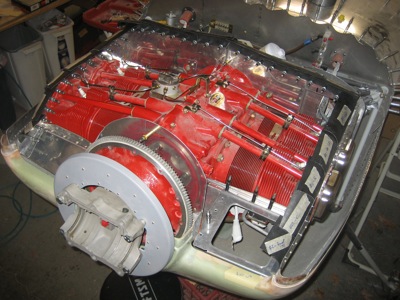I started fabricating and fitting the rubber strips that seal the baffles to the cowl. These allow the engine to move independently from the cowl, while preventing the incoming air from escaping past the baffles. In effect, the whole top of the engine becomes a plenum chamber with the top cowl as the lid, and the cooing air is forced down through the engine cylinders.
Before I got the tools out, I did a bunch of thread-reading on VAF, then went to the airport and looked under the cowl of as many RV's as I could find (five). It turned out that every one of airplanes I encountered had its baffle seals done in a different way, but it was interesting to see which ones fit well and which ones had leaks. In the end I came away with some good ideas that I'll try to put into practice.
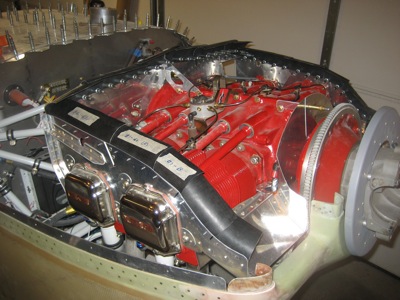
In places where the baffles are curved, I used multiple overlapping strips to avoid wrinkles that could cause leaks. Each one overlaps its neighbor in such a way that the incoming airflow will tend to flatten it against the baffles and top cowl – sort of like bird feathers. The fastener holes are 3/8" from the edge of the baffles, spaced approximately every 1 1/2". Eventually the rubber seals will be riveted to the metal baffles with large-head blind rivets.
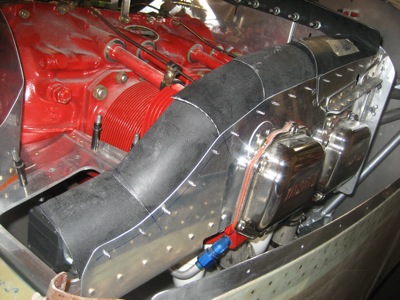
Since the seal material (rubberized fabric) comes rolled up, it has a natural curve to it. I took advantage of this by cutting parallel to the axis of curvature and orienting each piece of material so it naturally wants to bend inwards.
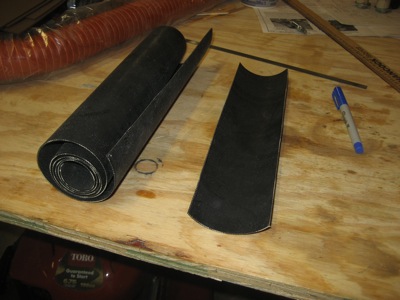
A leather punch is about the best way to put the fastener holes in the rubber strips. The rubber doesn't drill well with a normal twist bit, but the punch makes a clean hole without tearing.
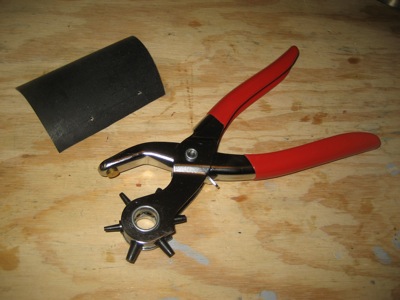
Looking into the cowl inlet during a test-fit. I purposefully left the rubber strips overly long so I could trim them to fit later. The forward end especially will need some work, since there will also be a separate set of rubber strips attached to the lower cowl.
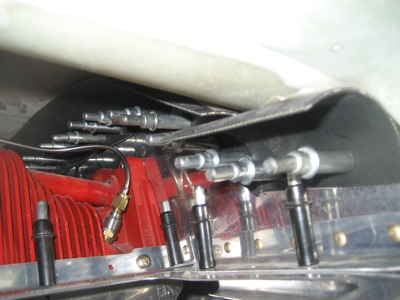
I managed to fit rubber seals to all the outboard and aft cylinder baffles before I got tired. The prop hub and flywheel will have to come off again in order to do the crankcase baffle seals anyway, so this is a good stopping point.
